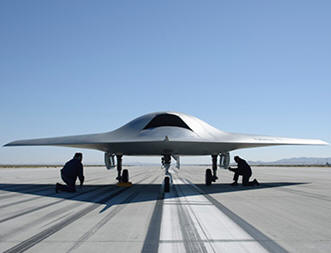|
|||||||||||||||||
|
|
|
|||
|
Boeing Phantom Ray Completes 1st Flight Reaching
7,500 Feet By Jim Douglas |
||||
 |
May 6, 2011 - This
week Boeing reported that its Phantom Ray unmanned
airborne system (UAS) successfully completed its first
flight April 27 at NASA's Dryden Flight Research Center
at Edwards Air Force Base, Calif. The 17-minute flight took place following a series of high-speed taxi tests in March that validated ground guidance, navigation and control and verified mission planning, pilot interface and operational procedures. Phantom Ray flew to 7,500 feet and reached a speed of 178 knots. "This day has been two-and-a-half years in the making," said Darryl Davis, president, Boeing Phantom Works. "It's the beginning of providing our customers with a test bed to develop future unmanned systems technology, and a testament to the capabilities resident within Boeing. |
|||
|
"Just as follow-on tests will expand Phantom
Ray's flight envelope, they also will help Boeing expand its
presence in the unmanned systems market."
The flight demonstrated Phantom Ray's
basic airworthiness, setting the stage for additional flights in
the next few weeks. These company-funded flights will prepare
Phantom Ray to support potential missions that may include
intelligence, surveillance and reconnaissance; suppression of
enemy air defenses; electronic attack; strike; and autonomous
air refueling. |
||||

